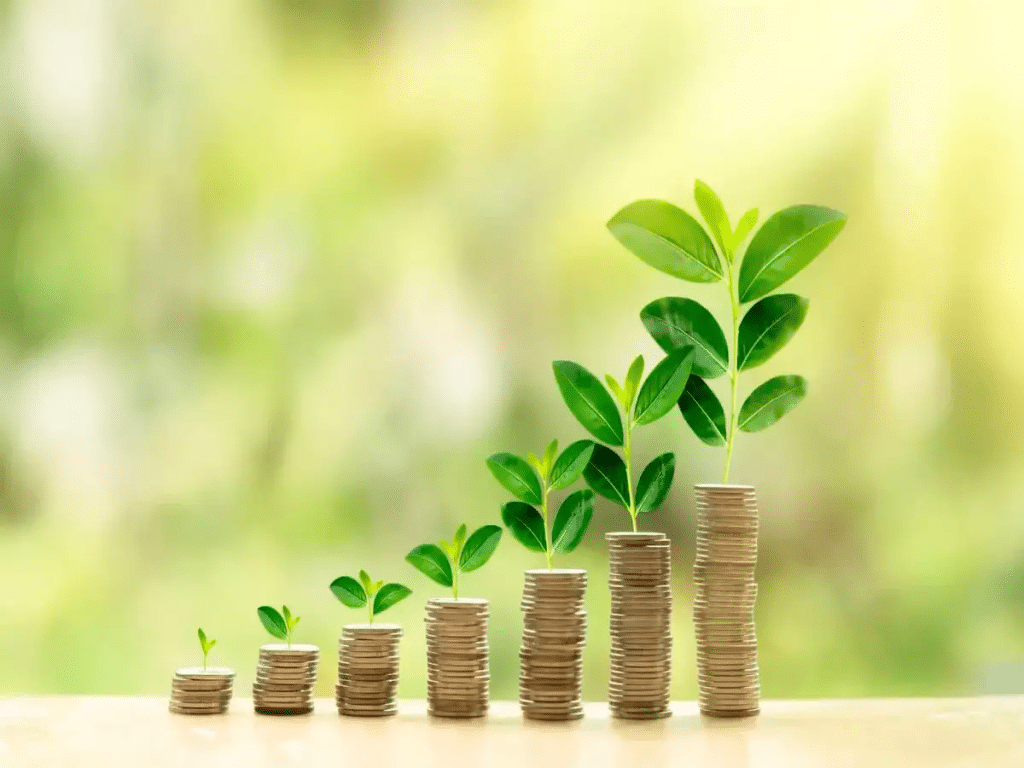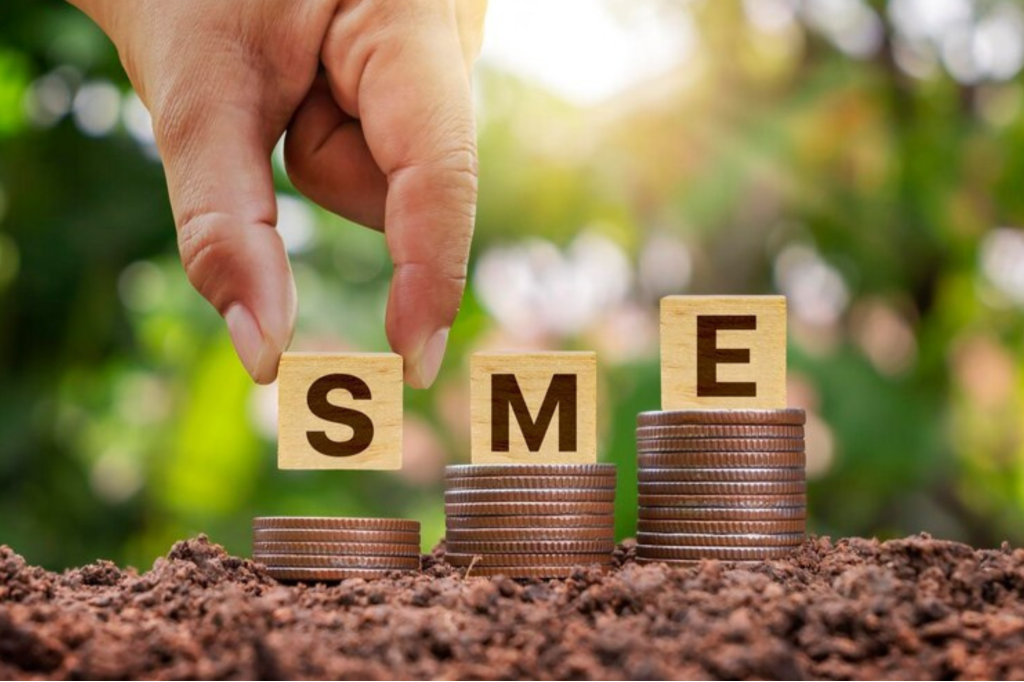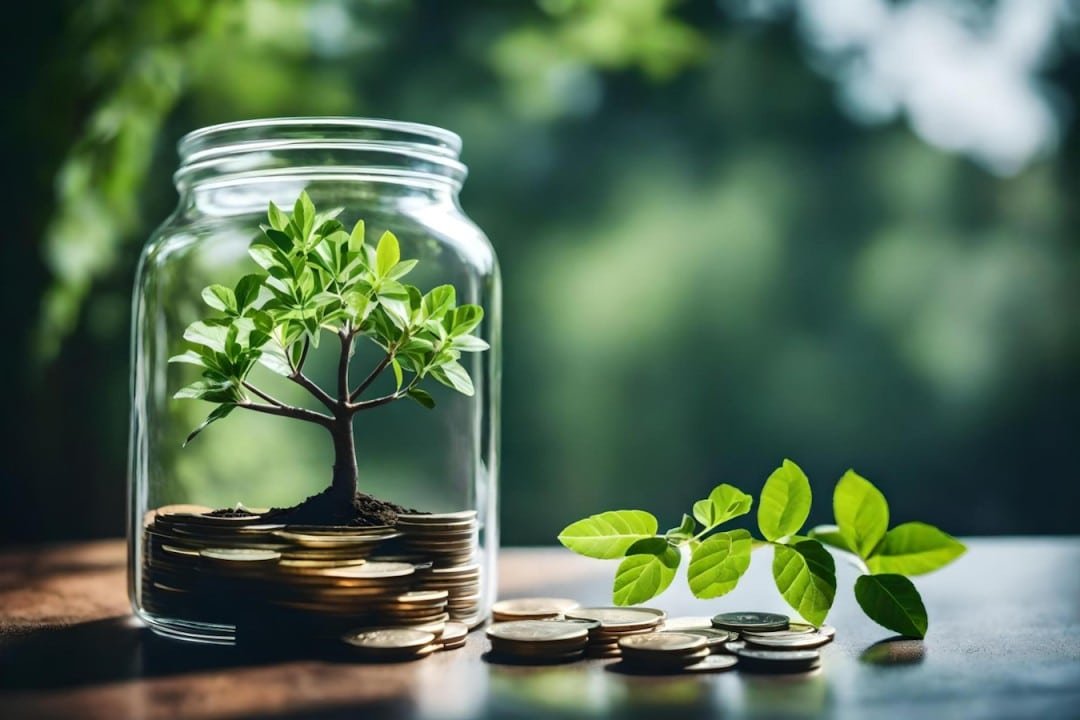n today’s world, where climate change and environmental degradation are at the forefront of global challenges, sustainable development has become a priority. More individuals, businesses, and governments are shifting toward green practices to minimize their carbon footprints and adopt eco-friendly methods. One of the financial solutions that have gained significant attention in recent years is the concept of Green Loans.
Green loans are designed to promote and finance projects that contribute to environmental sustainability. These loans are typically provided to individuals, businesses, or organizations undertaking projects that align with environmentally sustainable practices. From renewable energy projects and energy-efficient buildings to sustainable agriculture and clean transportation, green loans play a crucial role in accelerating the transition to a greener and more sustainable world.
In this article, we will explore the concept of green loans, how they support sustainable projects, their benefits, and how businesses or individuals can access them. Additionally, we will address frequently asked questions (FAQs) and provide key takeaways on the role of green loans in fostering a sustainable future.
Key Takeaways
- Green loans fund projects that have a positive environmental impact, such as renewable energy, energy-efficient buildings, and sustainable agriculture.
- Green loans often come with favorable terms, such as lower interest rates, to incentivize environmentally conscious investments.
- Eligible projects for green loans include renewable energy installations, clean transportation systems, and waste reduction initiatives.
- Green loans help combat climate change by supporting projects that reduce greenhouse gas emissions and promote sustainable resource use.
- Access to green loans can drive innovation and sustainability across industries, contributing to a global transition to a low-carbon economy.
What Are Green Loans?

A green loan is a type of financing specifically designed to support projects that have a positive environmental impact. Unlike traditional loans, which can be used for a variety of purposes, green loans are restricted to funding projects that promote environmental sustainability. This can include projects that reduce carbon emissions, improve energy efficiency, or support conservation efforts.
Green loans are structured to align with global environmental goals, such as reducing greenhouse gas emissions and achieving the targets outlined in the Paris Agreement. These loans may also qualify for incentives, such as lower interest rates or tax breaks, to encourage borrowers to invest in green technologies and practices.
Key Features of Green Loans
- Specific Purpose: Green loans are earmarked for projects that address environmental issues. Borrowers must demonstrate that their projects align with green standards and goals.
- Eligibility Criteria: Lenders evaluate green loan applications based on the environmental impact of the proposed projects. This can include energy efficiency, renewable energy, waste reduction, and water conservation.
- Potential for Lower Interest Rates: Due to the environmental impact of the projects, green loans often come with favorable interest rates compared to traditional loans.
- Certification and Compliance: To ensure the green credentials of the projects, green loans may require certification from recognized standards, such as the Green Loan Principles (GLP) or the International Finance Corporation’s (IFC) Performance Standards.
How Green Loans Support Sustainable Projects
Green loans offer a vital funding mechanism for individuals, businesses, and governments committed to reducing their environmental impact. These loans provide access to capital for projects that might otherwise be difficult to fund through traditional financing methods. Let’s explore the different ways in which green loans support sustainable projects.
1. Funding Renewable Energy Projects
One of the most significant ways green loans support sustainability is by funding renewable energy projects. These include solar, wind, hydroelectric, and geothermal energy systems. Renewable energy projects play a pivotal role in reducing dependence on fossil fuels, thereby decreasing greenhouse gas emissions.
- Solar Energy Installations: Green loans can be used to fund solar panel installations for both residential and commercial buildings. By investing in solar energy, borrowers can reduce their energy costs and carbon footprint.
- Wind Farms and Wind Turbines: Wind energy is another popular renewable energy project funded by green loans. This can include large-scale wind farms or smaller wind turbines for commercial or residential use.
- Geothermal Systems: Geothermal energy projects, which use the Earth’s heat to generate electricity or provide heating, can also be financed through green loans. These projects offer a renewable energy source with a much lower environmental impact compared to traditional power plants.
2. Promoting Energy Efficiency in Buildings
Energy-efficient buildings are key to reducing energy consumption and lowering carbon emissions. Green loans help fund the construction, renovation, or retrofitting of buildings to meet energy-efficient standards.
- LED Lighting and Smart Systems: Green loans can finance the installation of energy-efficient lighting systems, such as LED bulbs, and smart systems that optimize heating, cooling, and energy usage.
- Building Insulation and Solar Panels: Green loans can also be used for the installation of advanced insulation systems or solar panels in buildings. Both measures contribute to reducing the energy required for heating or cooling, leading to significant energy savings.
- Energy-Efficient Appliances: Projects that aim to replace outdated or inefficient appliances with energy-efficient models (such as HVAC systems, refrigerators, or water heaters) are often funded through green loans.
3. Supporting Sustainable Agriculture
Sustainable agriculture focuses on minimizing environmental impact, promoting soil health, and reducing water usage. Green loans can support projects that advance sustainable farming techniques, such as organic farming, agroforestry, and the use of low-carbon technologies.
- Organic Farming: Green loans can provide capital for farmers transitioning to organic farming, which uses fewer chemicals and promotes soil health. Organic farms often have a smaller carbon footprint compared to conventional farms.
- Water Conservation Projects: Green loans can fund projects aimed at improving water management on farms, such as installing efficient irrigation systems or collecting rainwater for agricultural use.
- Agroforestry and Land Restoration: Agroforestry, which integrates trees and shrubs into agricultural land, helps sequester carbon, protect biodiversity, and improve soil quality. Green loans can be used to finance agroforestry initiatives that contribute to sustainable land use.
4. Financing Sustainable Transportation

The transportation sector is a significant contributor to carbon emissions. Green loans play an essential role in promoting cleaner, greener transportation alternatives.
- Electric Vehicles (EVs): Green loans are increasingly being used to finance the purchase of electric vehicles, which produce no tailpipe emissions and help reduce air pollution.
- Electric Charging Infrastructure: To support the adoption of electric vehicles, green loans can also fund the development of charging stations and infrastructure that make EVs more accessible.
- Sustainable Public Transportation: Green loans can be used to finance projects that focus on public transportation, such as electric buses, bike-sharing programs, or light rail systems that provide sustainable transportation options for cities.
5. Supporting Circular Economy Initiatives
The concept of a circular economy focuses on reducing waste and reusing materials rather than relying on a linear model of “take, make, dispose.” Green loans help finance projects that promote recycling, waste management, and the repurposing of materials.
- Recycling Facilities: Green loans can fund the establishment or expansion of recycling centers that process materials such as plastics, metals, and paper for reuse in new products.
- Waste-to-Energy Projects: Green loans can also be used to finance waste-to-energy projects that convert waste materials into electricity or heat, reducing landfill waste and providing a renewable energy source.
Financing Waste Reduction and Recycling Projects
Waste management plays a vital role in environmental conservation. Green loans are increasingly used to finance projects that help reduce waste, enhance recycling, and promote sustainable waste-to-energy solutions. The importance of managing waste responsibly cannot be overstated, as improper waste disposal contributes significantly to pollution and landfills, emitting harmful greenhouse gases like methane.
- Recycling Programs: Green loans can finance the development of recycling facilities, which process materials such as paper, metal, glass, and plastic into reusable products. This not only reduces the volume of waste sent to landfills but also conserves natural resources and minimizes the need for virgin materials.
- Waste-to-Energy Technologies: Another key use of green loans is funding waste-to-energy projects, where waste materials, such as organic matter and non-recyclable items, are converted into energy. These technologies contribute to reducing landfills while providing a renewable energy source, reducing the need for fossil fuels.
- Composting and Organic Waste Management: Composting programs that recycle organic waste (e.g., food scraps, yard waste) into natural fertilizer are also eligible for green loans. These initiatives support organic farming and reduce the environmental burden of waste.
In summary, green loans promote a circular economy by supporting waste management systems that encourage recycling, reduce landfill use, and contribute to energy generation from waste, all while minimizing the environmental footprint.
Green Loans and the Role of Governments and Financial Institutions
Governments and financial institutions play an instrumental role in the green loan sector by encouraging sustainable investments and providing a framework that supports the financing of environmentally-friendly projects.
- Government Incentives: Many governments provide additional incentives for green projects, such as tax credits, grants, or rebates. These incentives can further reduce the financial burden of taking out a green loan and make it more attractive for businesses and individuals to invest in sustainability. For example, governments may offer a tax rebate for residential solar installations or provide funding for the construction of sustainable buildings.
- Financial Institutions: Banks and other financial institutions have recognized the growing demand for green financing. Many now offer specialized green loan products with attractive terms for environmental projects. Some financial institutions also work with third-party organizations to verify that projects meet specific environmental standards before issuing green loans, ensuring the credibility of these loans and their impact.
- International Green Loan Standards: In addition to local incentives, international standards for green loans have emerged, such as the Green Loan Principles (GLP), which outline the criteria for what qualifies as a green project and the requirements for documenting and reporting the environmental benefits of such projects. The International Finance Corporation (IFC), for example, has established stringent environmental guidelines that support sustainable development in emerging markets.
These mechanisms, supported by both the government and the financial industry, make green loans a viable and attractive option for financing sustainable projects.
Risks and Challenges in Green Loan Implementation

Despite their potential, there are certain challenges that borrowers and lenders face when it comes to green loans. These risks and challenges can sometimes hinder the widespread adoption of green loan programs.
- Lack of Standardization: While green loans are growing in popularity, there is still a lack of uniform standards across different regions and industries. This can make it difficult for borrowers to know exactly what qualifies as a “green” project and for lenders to assess the environmental impact of the projects.
- Upfront Capital Costs: Some green projects, such as renewable energy installations or energy-efficient building upgrades, may require a substantial upfront investment, which can be a barrier for smaller businesses or individuals. Although green loans offer favorable terms, the initial capital outlay can still be a significant hurdle for some borrowers.
- Verification and Certification Costs: Many green loans require third-party verification or certification, which can incur additional costs. For example, obtaining a LEED certification for a building or a Green Building Certification can be expensive and time-consuming. This additional burden can discourage smaller projects from seeking green loans.
- Market Risk: Some green projects may be subject to market risks, particularly in emerging sectors like clean energy and green technologies. These projects can face challenges related to fluctuating commodity prices, regulatory changes, and competition from traditional industries.
Despite these challenges, green loans offer a powerful tool to help individuals and businesses reduce their environmental footprint. Addressing these issues through better regulation, incentives, and market support is critical for scaling up green loan adoption.
The Future of Green Loans and Sustainability Financing
As the world increasingly turns its attention toward sustainability, green loans are likely to grow in popularity. Environmental concerns such as climate change, pollution, and resource depletion require immediate action. Green loans provide a flexible, accessible means of financing that allows both individuals and businesses to contribute to environmental preservation while generating long-term economic benefits.
- Growth of Green Loan Markets: As consumer demand for sustainable products and services increases, businesses are likely to invest more in green technologies. Green loans will play a key role in financing these investments and enabling companies to meet their environmental goals.
- Technological Advancements: Technological innovations in energy, waste management, and sustainable agriculture will continue to evolve, and green loans will be essential in helping to fund these advancements. For example, the growth of battery storage technologies for renewable energy and the development of new electric vehicle models will benefit from increased funding through green loans.
- Sustainable Investment Trends: The trend toward sustainable investment is expected to expand, with investors increasingly seeking projects that contribute to environmental sustainability. This will further incentivize businesses to take on green loans, knowing that there is strong investor demand for sustainability-related projects.
As sustainability becomes an essential component of business strategy, the role of green loans in supporting these efforts will only grow. More companies, large and small, will turn to green loans as an essential tool for financing their green projects.
Green Loans in Developing Countries: A Path to Sustainable Growth
Green loans have the potential to drive sustainable development in developing countries, particularly in regions that are most vulnerable to climate change. Access to financing for green projects can help countries with limited resources transition to a low-carbon economy and achieve their Sustainable Development Goals (SDGs).
Renewable Energy in Emerging Markets
Many developing countries are heavily reliant on fossil fuels for energy production. Green loans can help these countries shift to renewable energy sources, such as solar, wind, and hydropower. Renewable energy projects financed by green loans can bring affordable and reliable electricity to underserved communities while reducing the environmental impact of energy production.
- Off-Grid Solar Solutions: In rural and remote areas, off-grid solar systems powered by green loans can provide clean and affordable energy. These solutions are scalable and cost-effective, offering a pathway to energy independence in regions with limited access to electricity.
- Microgrid Solutions: Green loans can also finance microgrids, which are localized energy networks that operate independently or in tandem with the national grid. Microgrids powered by renewable energy sources can improve energy access and security in areas prone to natural disasters.
Access to Green Loans for Small and Medium Enterprises (SMEs)

In many developing countries, small businesses and SMEs are essential drivers of economic growth. Green loans can help these enterprises adopt sustainable practices by providing the capital needed for energy efficiency improvements, waste reduction, and the development of eco-friendly products and services.
- Energy Efficiency Improvements: Green loans enable SMEs to upgrade their facilities with energy-efficient lighting, HVAC systems, and insulation, leading to reduced energy consumption and cost savings.
- Sustainable Product Development: Small businesses can use green loans to invest in eco-friendly technologies and sustainable product lines, helping them tap into the growing market for sustainable goods and services.
By providing green financing options to SMEs, green loans help foster inclusive, sustainable growth and empower businesses in developing countries to contribute to environmental conservation.
Also Read: What Is A Green Loan And How Can It Benefit Your Sustainable Projects?
Conclusion
Green loans represent an innovative financial tool that plays a crucial role in supporting sustainable projects across the globe. By providing accessible financing for projects that contribute to environmental sustainability, green loans are helping businesses, organizations, and individuals reduce their carbon footprint and adopt eco-friendly practices. These loans offer an opportunity for significant positive environmental impact, from reducing greenhouse gas emissions and enhancing energy efficiency to promoting sustainable agriculture and waste reduction.
As the world continues to face the challenges of climate change and resource depletion, green loans provide an essential mechanism for driving progress toward a more sustainable future. Whether it’s financing renewable energy, improving energy efficiency, or supporting sustainable agriculture, green loans offer a path toward achieving a greener, more resilient economy.
FAQs
What qualifies as a green loan?
Green loans are those used to finance projects that contribute to environmental sustainability, such as renewable energy, energy efficiency, sustainable agriculture, clean transportation, and waste reduction initiatives.
How do I apply for a green loan?
To apply for a green loan, you will need to submit a proposal outlining the environmental benefits of your project. The loan provider will assess the project’s environmental impact and may require certification from recognized green standards.
Are green loans available to individuals or only businesses?
Green loans are available to both individuals and businesses. Individuals can use green loans for home renovations, solar installations, or energy-efficient appliances, while businesses can use them for large-scale green projects.
Do green loans have lower interest rates than traditional loans?
Yes, green loans often come with lower interest rates to encourage environmentally sustainable investments. The interest rate may depend on the size and type of project being financed.
What types of projects are eligible for green loan funding?
Eligible projects for green loans include renewable energy installations, energy-efficient buildings, sustainable farming practices, electric vehicle purchases, waste management projects, and more.
Are there any government incentives for green loans?
Many governments offer tax incentives, rebates, or subsidies for projects that qualify for green loans, particularly those focused on renewable energy or energy efficiency.
How do green loans contribute to the fight against climate change?
Green loans contribute by financing projects that reduce greenhouse gas emissions, improve energy efficiency, promote sustainable practices, and reduce waste, thereby helping mitigate the effects of climate change.




